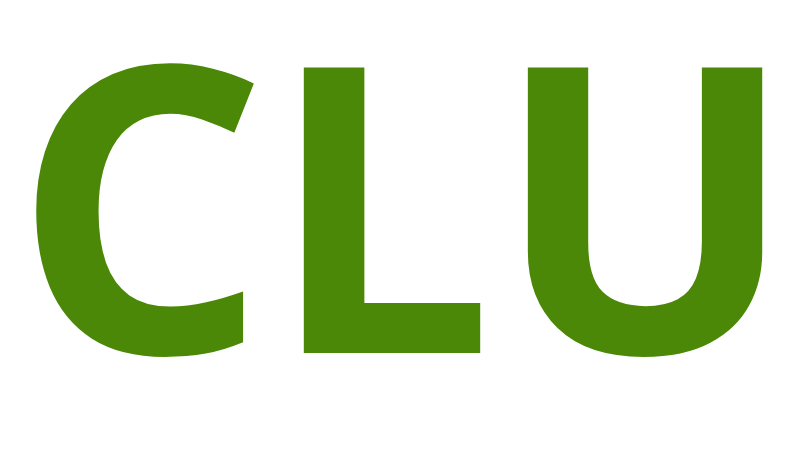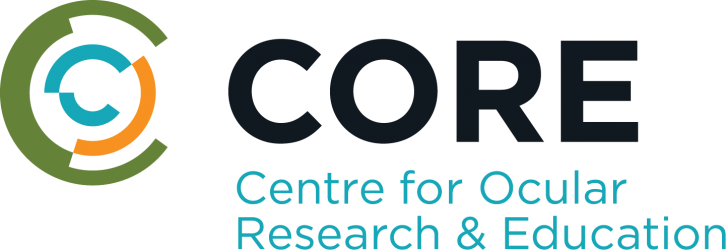Jump to:
Peer-reviewed articles
2025
Garg,P., Shokrollahi,P., Darge,H., Phan,C-M., Jones,L.
Controlled PVA Release from Chemical-Physical Interpenetrating Networks to Treat Dry Eyes
ACS Omega 2025;10(1):1249-1260
[ Show Abstract ]
Dry eye disease is becoming increasingly prevalent, and lubricating eye drops, a mainstay of its treatment, have a short duration of time on the ocular surface. Although there are various drug delivery methods to increase the ocular surface residence time of a topical lubricant, the main problem is the burst release from these delivery systems. To overcome this limitation, herein, a chemical–physical interpenetrating network (IPN) was fabricated to take control over the release of poly(vinyl alcohol) (PVA), a well-known therapeutic agent used to stabilize tear film, from gelatin methacrylate (GelMA) hydrogels. In this report, PVA was specifically used as part of a GelMA-based polymeric hydrogel owing to its physical cross-linking ability via a simple freeze-thaw method. The interpenetrating polymer network was fabricated in a sequential manner where GelMA was chemically cross-linked by photo-cross-linking, followed by physical cross-linking of PVA using a relatively short freeze-thaw cycle. Interestingly, upon applying only one short freeze-thaw cycle (of 1 or 2 h), the crystalline domains in PVA were increased in the interpenetrating network. The endothermic peaks at 48 and 60 °C in differential scanning calorimetry (DSC) thermograms and 20°–2θ peaks in X-ray diffraction (XRD) patterns suggest the presence of these crystalline domains. With the help of a suite of characterization, we further delineate the role of freeze-thaw cycles in taking control over the release of PVA. The release profiles of the PVA-containing hydrogels showed highest linearity with the Korsmeyer–Peppas model (0.9944 < R2 < 0.9952), indicating that these systems follow non-Fickian or anomalous transport.
Garg,P., Shokrollahi,P., Darge,H., Phan,C-M., Jones,L.
3D-Printed Contact Lenses to Release Polyvinyl Alcohol as a Therapeutic Agent for the Treatment of Dry Eyes
Pharmaceutics 2025;17(2):Article 219
[ Show Abstract ]
Purpose: Dry eye disease is highly prevalent, and the most common treatment, lubricating eye drops, only remains effective for a very short period of time. This project aims to 3D print a proof-of-concept, custom-fit, polyvinyl alcohol (PVA)-eluting contact lens (CL) for the treatment of dry eye disease. PVA is a commonly used viscosity enhancer in eye drops, with the capability of reducing symptoms of dry eye by stabilizing the tear film and reducing tear evaporation. The protective effects of PVA could be attributed to its water-retaining ability, which provides moisturization and prevents the loss of water.
Method: In this work, a low-cost stereolithography-based 3D printer was retrofitted with a humidity and temperature control kit to 3D print a PVA-loaded custom-fit CL. To evaluate the print quality of the 3D-printed CL, circularity was used to evaluate the shape fidelity in 3D printing. The PVA release from these lenses was assessed, along with its role in acting as a viscosity enhancer. The effect of PVA was further analyzed by a dry eye disease (desiccation stress) cell model.
Results: The shape fidelity evaluation of the 3D-printed CL displayed excellent circularity. The diameter, sagittal depth, and base curve of the 3D-printed lenses were measured to be 14.27 ± 0.06 mm, 3.77 ± 0.16 mm, and 6.4 ± 0.24 mm, respectively. The PVA release curves showed that approximately 1300 µg of PVA was released over the study duration of 24 h.
Conclusions: Overall, this work demonstrates that a 3D-printed PVA-eluting CL is a promising candidate for the treatment of dry eye.
Garg,P., Shokrollahi,P., Phan,C.-M., Jones,L.
Biodegradable 3D-Printed Conjunctival Inserts for the Treatment of Dry Eyes
Polymers 2025;17(5):
[ Show Abstract ]
Purpose: To fabricate 3D-printed, biodegradable conjunctival gelatin methacrylate (GelMA) inserts that can release polyvinyl alcohol (PVA) when exposed to an ocular surface enzyme.
Method: In this work, biodegradable conjunctival inserts were 3D-printed using a stereolithography-based technique. The release of PVA from these insert formulations (containing 10% GelMA and 5% PVA (P-Gel-5%)) was assessed along with different mathematical models of drug release. The biodegradation rates of these inserts were studied in the presence of a tear-film enzyme (matrix metalloproteinase-9; MMP9). The morphology of the inserts before and after enzymatic degradation was monitored using scanning electron microscopy.
Results: The 3D-printed P-Gel-5% inserts formed a semi-interpenetrating network, which was mechanically stronger than GelMA inserts. The PVA release graphs demonstrate that at the end of 24 h, 222.7 ± 20.3 µg, 265.5 ± 27.1 µg, and 242.7 ± 30.4 µg of PVA were released when exposed to 25, 50, and 100 µg/mL of MMP9, respectively. The release profiles of the P-Gel-5% containing hydrogels in the presence of different concentrations of MMP9 showed the highest linearity with the Korsmeyer–Peppas model. The results suggest that the degradation rate over 24 h is a function of MMP9 enzyme concentration. Over 80% of P-Gel-5% inserts were degraded at the end of 8 h, 12 h, and 24 h in the presence of 100, 50, and 25 µg/mL MMP9 enzyme solutions, respectively.
Conclusions: These results demonstrate the potential for 3D printing of GelMA for use as conjunctival inserts. These inserts could be used to deliver PVA, which is a well-known therapeutic agent for dry eye disease. PVA release is influenced by multiple mechanisms, including diffusion and enzymatic degradation, which is supported by morphological studies and biodegradation results.
Shokrollahi,P., Garg,P., Wulff,D., Hui,Al., Phan,C-M., Jones,L.
Vat Photopolymerization 3D Printing Optimization: Analysis of Print Conditions and Print Quality for Complex Geometries and Ocular Applications
International Journal of Pharmaceutics 2025;668(January):Article 124999
[ Show Abstract ]
Abstract: 3D printing, also known as additive manufacturing, continues to reshape manufacturing paradigms in healthcare by providing customized on-demand object fabrication. However, stereolithography-based 3D printers encounter a conflict between optimizing printing parameters, requiring more time, and print efficiency, requiring less time. Moreover, commonly used metrics to assess shape fidelity of 3D printed hydrogel materials like ‘circularity’ and ‘printability’ are limited by the soft nature of hydrogels, that can cause irregularities in their boundary. To unlock the full potential of 3D printing of biomaterials, it is also necessary to understand correlation between printing parameters and ink properties. In this work, a method based on curing depth, overcuring (cumulative cure), and print thickness was developed, which enables a time-efficient and reliable determination of printing conditions for complex geometries using gelatin methacrylate hydrogel biomaterial ink. We also examined the impact of printing direction on the print quality in terms of object/print thickness and aspect ratio. Moreover, the effects of dye concentration, exposure time, and layer thickness on print quality were evaluated, with discussions focused on the correlation between print dimension to layer thickness. Further evaluation was achieved by successfully printing bioinspired corneal stroma-like scaffold and delicate structures like a contact lens and a model eyeball, substantially expanding the scope of this method in producing high-quality prints with intricate details. We also demonstrate the effectiveness of ‘Feret ratio,’ another measure of object shape, in assessing the shape fidelity of different prints. Overall, the results highlight the practical potential of this method in enhancing the speed and reliability of the 3D printing processes involving complex geometries using a low-cost 3D printers.
2024
Mohseni,M., Shokrollahi,P., Barzin, J.
Gelatin/O-carboxymethyl chitosan injectable self-healing hydrogels for ibuprofen and naproxen dual release
International Journal of Biological Macromolecules 2024;263, Part 1(April):Art No 130266
[ Show Abstract ]
Recently, a significantly greater clinical benefit has been reported with a combination of glucosamine sulfate and nonsteroidal anti-inflammatory drugs (NSAIDs) compared to either treatment alone for the growing osteoarthritis (OA) disease. So, this study introduces hydrogels using O-carboxymethyl chitosan (O-CMC, structurally akin glucosamine glycan), and Gelatin type A (GA) in a 1:2 ratio with β-glycerophosphate (βGPh) at varying percentages (5 %, 12.5 %, and 15 %). We show that hydrogel properties, adaptable for drug delivery or tissue engineering, can be fine-tuned based on OCMC:βGPh ratio. CMC/GA/βGPh-12.5 exhibited a swelling rate of 189 %, compressive stress of 164 kPa, and compressive modulus of 3.4 kPa. The self-healing hydrogel also exhibited excellent injectability through a 21-gauge needle, requiring only 5 N of force. Ibuprofen and Naproxen release from CMC/GA/βGPh-12.5 and CMC/GA/βGPh-15 of designed dimensions (bi-layer structures of different diameter and height) were measured, and drug release kinetics were estimated using mathematical equations (MATLAB and polyfit program). CMC/GA/βGPh-12.5 demonstrated significant antibacterial effects against E. coli and S. aureus, a high cell survival rate of 89 % against L929 fibroblasts, and strong cell adhesion, all indicating biocompatibility. These findings underscore potential of these hydrogels as promising candidates for treating inflammatory diseases such as osteoarthritis.
2023
Akbari,E., Imani,R., Shokrollahi,P., Keshel,S. H.
Corneal sustained delivery of hyaluronic acid from nanofiber-containing ring-implanted contact lens
Journal of Biomaterials Application 2023;37(6):992-1006
[ Show Abstract ]
Dry eye syndrome, as a persist corneal epithelial defect (PED), is an inconvenient ocular disorder that is generally treated by high-dosage, conventional eye drops. Addressing low efficacy and rather restricted bioavailability of the conventional eye drops, drug-eluting contact lenses (CLs) are widely used as alternatives in ophthalmic drug delivery applications. In the present study, a nanofiber-containing ring implant poly (vinyl alcohol) (PVA) hydrogel is designed as a carrier for hyaluronic acid (HA) delivery. hyaluronic acid is physically encapsulated in a nanofiber-containing ring-shaped hydrogel with a 2 mm width that is implanted in the final CLs hydrogel. The designed CL has 59% porosity, 275% swelling ratio and undergoes no weight loss at physiological conditions in14 days. In-vitro release studies were performed on the CLs with and without nanofibers. The results showed that nanofiber incorporation in the designed CL was highly influential in decreasing burst release and supported sustained release of HA over 14 days. In addition, nanofiber incorporation in the designed system strengthened the lens, and the young modulus of the PVA hydrogel increased from 6 to 10 kPa. Cell viability study also revealed no cell cytotoxicity and cell attachment. Overall, the study demonstrated the effective role of nanofibers in the physical strengthening of the CL. Also, the designed system holds promise as a potential candidate for HA delivery over an extended period for treating dry eye syndrome.
Scientific Presentations
2025
Garg P, Shokrollahi P, Phan CM, Jones L. 3D printed contact lenses for the delivery of polyvinyl alcohol as a wetting agent The Association for Research in Vision and Ophthalmology Annual Meeting, Salt Lake City, May 7, 2025 [ Show Abstract ]
Purpose
To print a proof-of-concept 3D printed contact lenses to release polyvinyl alcohol (PVA) as a wetting agent, using 3D printing technology.
Methods
A model CL was designed using a computer-aided design software (FreeCAD 0.19) and 3D-printed using a commercial masked-stereolithography 3D printer. The printer was retrofitted with a humidity and temperature control kit to enable printing at ~95% humidity and 37°C. The polymer solution consisted of 10% (w/v) GelMA, 5% (w/v) PVA as a wetting agent, a photoinitiator, and yellow dye as a light absorbing agent to reduce unwanted light leaks. These 3D printed lenses were washed with warm PBS to remove any uncured polymer solution and post-cured with UV light. The print quality was assessed by determining the ratio between the theoretical area vs the actual printed area and the theoretical circumference vs the actual printed circumference. To study the PVA release from these CLs, they were incubated in glass vials with gentle agitation with 8 mL PBS at 35°C. At each indicated time point 300 µL of the solution was removed for detection of PVA and replaced with fresh PBS. The release kinetics was studied by different mathematical models using GraphPad software.
Results
The CLs were 3D printed in an hour and the print quality scores were 0.96 and 1.04 for area and circumference ratios respectively. The minimum thickness for the lenses that was reliably printed each time using the current 3D printing setup was 400 µm. Around 4711 µg of PVA was released over the study duration of 8 hours, supporting our concept PVA-loaded 3D printed lenses. The release kinetics showed high linearity with Higuchi’s model which describes the release rate of drugs from matrix systems based on diffusion.
Conclusions
This study attempted to print a proof-of-concept 3D printed contact lens that can release PVA from GelMA. Also, these 3D printed contact lenses displayed a good print quality score. Future work will focus on optimizing the thickness and transparency of these lenses as well as tuning the release kinetics of PVA.
Shokrollahi P, Garg P, Hui A, Phan,C, Jones,L. PVA-Based Hydrogel Inserts for Atropine Delivery for Myopia Treatment The Association for Research in Vision and Ophthalmology Annual Meeting, Salt Lake City, May 4, 2025 [ Show Abstract ]
Purpose
Myopia progression is a global problem, with 50% of the world’s population predicted to be myopic by 2050. This project aimed to develop atropine (ATR)-releasing ocular inserts based on polyvinyl alcohol (PVA) hydrogels for the treatment of myopia, which could be complementary to other myopia control methods, such as spectacles or contact lenses.
Methods
PVA was dissolved in water at 80°C to prepare a 10% (w/v) solution. The solution was divided into two parts. ATR was added to one part to give 0.6% (w/v) concentration, and the other part acted as a control. Both groups were transferred to a silicon mold (5.5mm diameter, 0.2mm height, ~100µl) and subjected to six freeze-thaw cycles, alternating between freezing at -20°C for 16 hours and thawing at room temperature for 8 hours
Mechanical properties were studied via a compression test (TA instruments, Hamilton, USA), and the morphology was assessed using scanning electron microscopy (Quanta FEG 250, FEI, USA). The release of atropine was then measured in 1mL of phosphate-buffered saline every 30 minutes for 6 hours.
Results
SEM analysis revealed a highly interconnected porous structure and a narrow pore size distribution (12±8µm, Figure 1A). The hydrogels displayed about 0.86 kPa compression modulus and 21.81 kPA compression strength at 30% strain (Figure 1B) and withstood 5 compression cycles with minimal changes in modulus. The discs released about 25% of the initial ATR loaded (~600 µg) in the first 30 min and about 50% in 1 hour. Nearly, 100% of the cargo was released in 3.5 hours (Figure 1C). The release profile followed first-order kinetics (R2 = 0.9628).
Conclusions
The open pore network of the discs can accommodate water and improve the elastic soft “feel” of the insert, while being structurally robust and easy to handle. This hydrogel insert based on PVA, a polymer with FDA approval for biomedical applications, can support the gradual release of ATR up to 3.5 hours and helps avoid the side effects of 1% ATR eye drops, while providing a similar cumulative concentration of the drug to the eye. Future studies will focus on optimizing parameters to extend the release duration.
2024
Garg P, Shokrollahi P, Phan CM, Jones L. 3D printing of PVA loaded ocular inserts for ocular drug delivery The Association for Research in Vision and Ophthalmology, Seattle, WA, May 9, 2024 [ Show Abstract ][ PDF ]
Purpose: To develop ocular inserts comprised of polyvinyl alcohol (PVA) and gelatin methacrylate (GelMA), using 3D printing technology.
Methods: Inserts were synthesized using a bioink formulation consisting of 10% (w/v) GelMA, 5% (w/v) and 7.5% (w/v) PVA, 0.6% (w/v) lithium phenyl-2,4,6-trimethylbenzoylphosphinate (LAP), and 5% (v/v) yellow dye as a light absorbing agent to improve print resolution. They had a 4mm diameter, 1mm thickness and were fabricated using a commercial masked-stereolithography (mSLA) 3D printer at 95% humidity and 37°C temperature. Morphology of the inserts was investigated by freeze-drying samples and imaging them using a scanning electron microscope (SEM). Release of PVA over 5 hours was studied by incubating at 35°C in PBS in an incubator shaker at 50rpm. The hydrogel samples were freeze dried and their equilibrium swelling was studied in PBS using gravimetric method.
Results: The PVA-loaded ocular inserts were 3D printed within 30 minutes. SEM images showed that 7.5% PVA loaded inserts had more uniform pore size distribution compared to the gels with no PVA. Approximately 37% of PVA was released within the first 2 hrs from the inserts containing PVA, and the release continued up to approximately 4 hrs before reaching a plateau. The release kinetics can be attributed primarily due to passive diffusion. The swelling curves of these hydrogels suggest that they reach equilibrium swelling within 24hr. From the slope of the swelling curve in the first hour, it can be inferred that swelling happens at a slower rate for GelMA/PVA compared to GelMA alone. This slower swelling rate helps to control the release and supports a sustained release of PVA from the combination.
Conclusions: This study showed that a GelMA-PVA based bioink can be used to 3D print ocular inserts that can release PVA for up to 4 hours. Future work will focus on designing 3D scaffolds to increase the release duration of PVA from these gels.
Ho B, Phan CM, Garg P, Shokrollahi P, Jones L. A screening platform for simultaneous evaluation of biodegradation and therapeutic release from an ocular hydrogel and its effect on human corneal epithelial cells The Association for Research in Vision and Ophthalmology, Seattle, WA, May 7, 2024 [ Show Abstract ][ PDF ]
Purpose: To integrate human corneal epithelial cells (HCECs) into a millifluidic screening platform that quantifies biodegradation and release of an entrapped therapeutic from an ocular hydrogel.
Introduction: Biodegradable hydrogels are novel drug delivery methods designed to release entrapped drugs or therapeutics as the gel degrades in situ. The primary challenge in developing biodegradable hydrogels for drug delivery lies in accurately measuring their degradation over time, while simultaneously being able to evaluate the drug release kinetics, which is typically a cumbersome procedure. To properly evaluate the biodegradation of a hydrogel, it is also essential to simulate key factors of the target tissue environment. In the context of the eye, this includes ocular temperature, tear flow, and low tear volume. Recent advances in organ-on-a-chip technologies have made it possible to emulate the human corneal environment. This will allow more accurate measurements of hydrogel degradation rates, subsequent drug or therapeutic release, and ultimately the overall effect on human corneal epithelial cells.
Methods: Gelatin Methacrylate (GelMA) ocular inserts with polyvinyl alcohol (PVA) (10% GelMA 7.5% PVA) were placed inside a custom-designed millifluidic device. Ocular inserts were degraded with up to 200 μg/mL of matrix metallipeptidase 9 (MMP9) for 24 hours at 37oC in PBS. Biodegradation of the ocular insert was quantified using a computational image analysis pipeline. The eluates containing the degradation products were collected to measure PVA released using a spectrophotometric assay, and its toxicity on human corneal epithelial cells (HCECs) was determined by alamarBlueTM assays.
Results: There was significant biodegradation of the GelMA-PVA inserts with increasing concentration of MMP9 in the millifluidic device, which was accurately quantified using a custom computational analysis. Degradation products in the eluate were collected, and there was a ~2-fold increase of PVA released in samples treated with MMP9 compared to the control. The same eluates were non-toxic to HCECs, and interestingly protected HCECs from hyperosmotic conditions mimicking dry eye disease.
Professional Publications
2024
Shokrollahi P. Fast Forward to the Future: Material science innovation Contact Lens Spectrum 2024;39, June: 34





